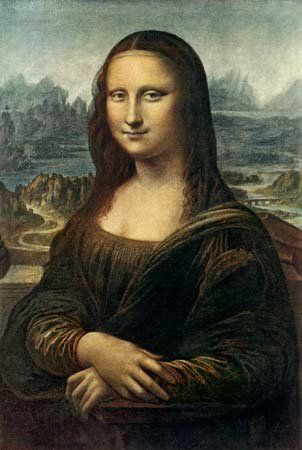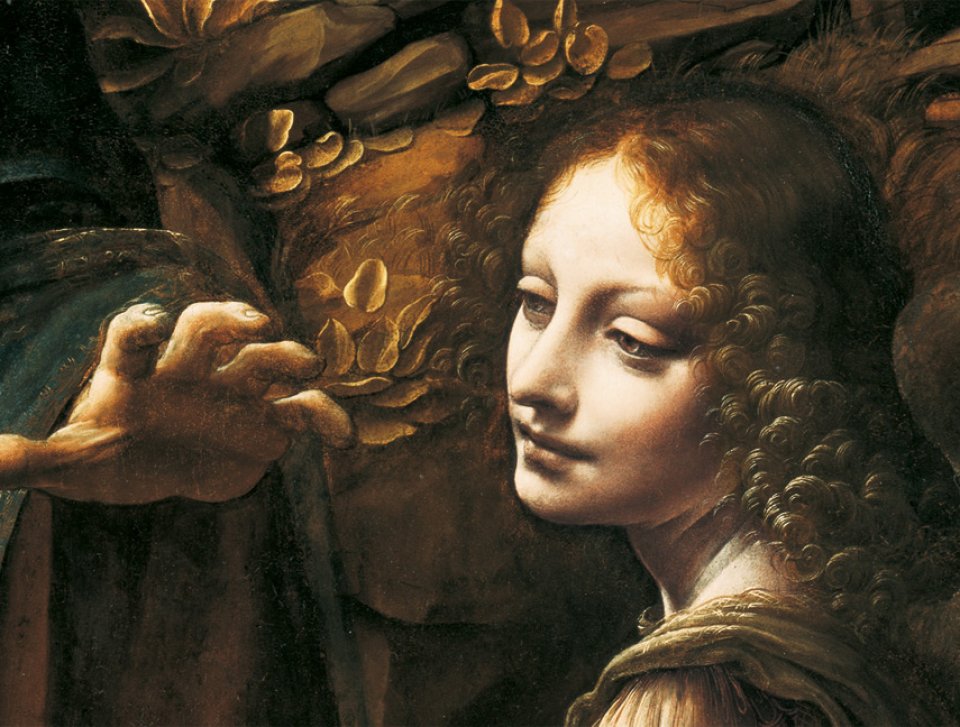Mona Lisa : Painting By Leonardo Da Vinci
Mona Lisa, oil painting on a poplar wood panel by the Italian painter, draftsman, sculptor, architect, and engineer Leonardo da Vinci, probably the world’s most-famous painting. It was painted sometime between 1503 and 1519, when Leonardo was living in Florence, and it now hangs in the Louvre, in Paris, where it remains an object of pilgrimage in the 21st century. The poplar panel shows evidence of warping and was stabilized in 1951 with the addition of an oak frame and in 1970 with four vertical braces. Dovetails also were added, to prevent the widening of a small crack visible near the centre of the upper edge of the painting. The sitter’s mysterious smile and her unproven identity have made the painting a source of ongoing investigation and fascination.

The Mona Lisa And Its Influence
These signs of aging distract little from the painting’s effect. In its exquisite synthesis of sitter and landscape, the Mona Lisa set the standard for all future portraits. The painting presents a woman in half-body portrait, which has as a backdrop a distant landscape. Yet this simple description of a seemingly standard composition gives little sense of Leonardo’s achievement. The sensuous curves of the sitter’s hair and clothing, created through sfumato (use of fine shading), are echoed in the shapes of the valleys and rivers behind her. The sense of overall harmony achieved in the painting—especially apparent in the sitter’s faint smile—reflects Leonardo’s idea of the cosmic link connecting humanity and nature, making this painting an enduring record of Leonardo’s vision.
There has been much speculation and debate regarding the identity of the portrait’s sitter. Scholars and historians have posited numerous interpretations, including that she is Lisa del Giocondo (née Gherardini), the wife of the Florentine merchant Francesco di Bartolomeo del Giocondo, hence the alternative title to the work, La Gioconda. That identity was first suggested in 1550 by artist biographer Giorgio Vasari. Another theory was that the model may have been Leonardo’s mother, Caterina. That interpretation was put forth by, among others, Sigmund Freud, who seemed to think that the Mona Lisa’s mysterious smile emerged from a—perhaps unconscious—memory of Caterina’s smile. A third suggestion was that the painting was, in fact, Leonardo’s self-portrait, given the resemblance between the sitter’s and the artist’s facial features. Some scholars suggested that disguising himself as a woman was the artist’s riddle. The sitter’s identity has not been conclusively proven. In an attempt to settle the debate, art and forensic experts in August 2013 opened the tomb of the Giocondo family in Florence in order to find Lisa del Giocondo’s remains, test her DNA, and recreate an image of her face.
Whatever the sitter’s identity, the influence of the Mona Lisa on the Renaissance and later times has been enormous. The Mona Lisa revolutionized contemporary portrait painting. Leonardo’s preliminary drawings encouraged other artists to make more and freer studies for their paintings and stimulated connoisseurs to collect those drawings. Through the drawings his Milanese works were made known to the Florentines. Also, his reputation and stature as an artist and thinker spread to his fellow artists and assured for them a freedom of action and thought similar to his own. One such painter was the young Raphael, who sketched Leonardo’s work in progress and adopted the Mona Lisa format for his portraits; it served as a clear model for his Portrait of Maddalena Doni (c. 1506).

Other Mona Lisas
At least a dozen excellent replicas of the Mona Lisa exist, many of them by the master’s students. The proliferation of Mona Lisas reflects, at least in part, the subject’s almost immediate embodiment of the ideal woman—beautiful, enigmatic, receptive, and still just out of reach.
Over the centuries this quintessential woman has taken on a new life in popular culture. In the 20th century alone, her iconic status was mocked in schoolboy fashion—the addition of a mustache and goatee to a postcard reproduction—in Marcel Duchamp’s readymade, L.H.O.O.Q. (1919). His irreverent defacing of this best known of iconic paintings expressed the Dadaists’ scorn for the art of the past, which in their eyes was part of the infamy of a civilization that had produced the horrors of the First World War just ended. Andy Warhol too took aim at the painting’s status, in his 1963 serigraph Mona Lisa.